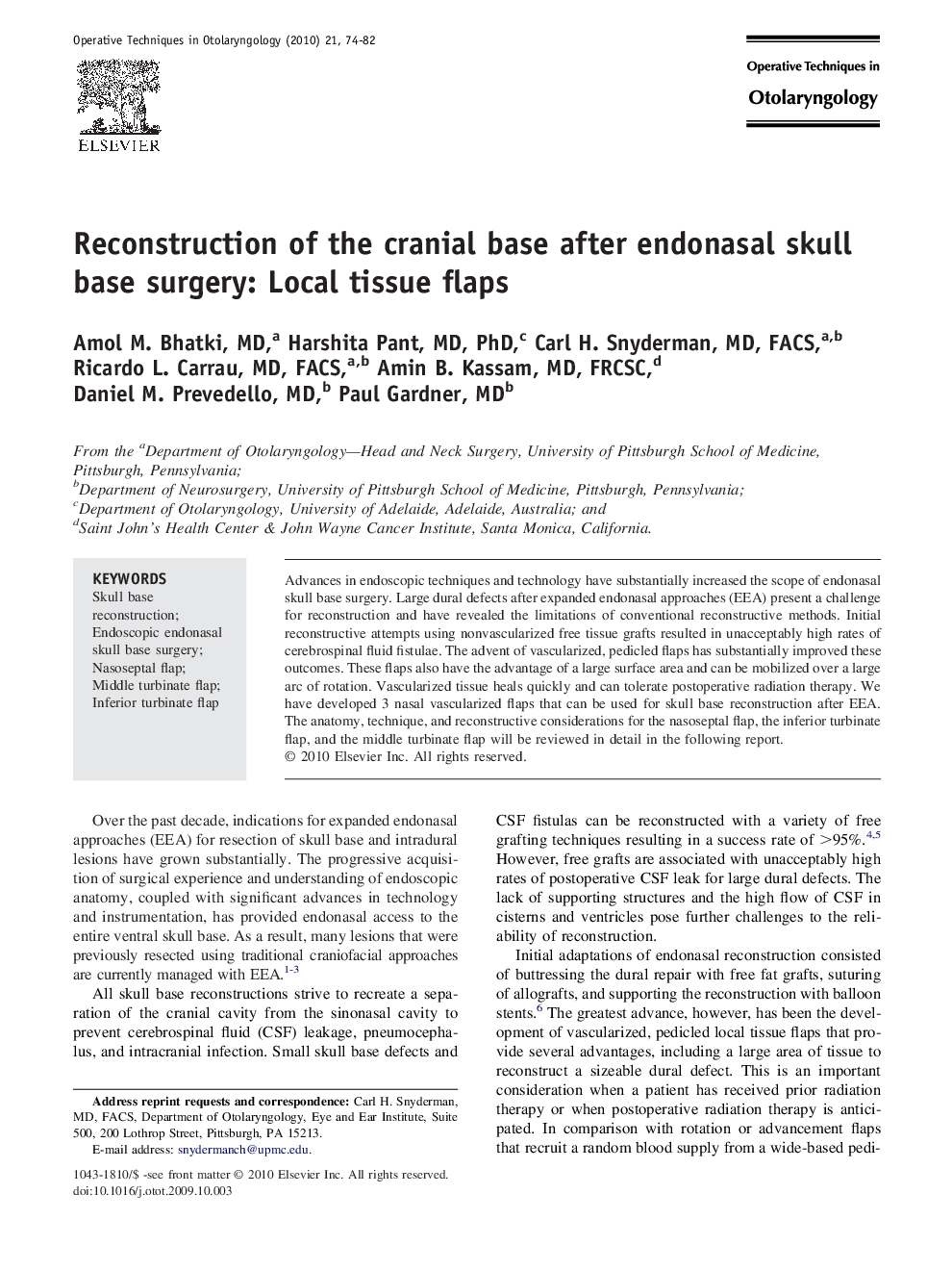| کد مقاله | کد نشریه | سال انتشار | مقاله انگلیسی | نسخه تمام متن |
|---|---|---|---|---|
| 4122886 | 1270443 | 2010 | 9 صفحه PDF | دانلود رایگان |

Advances in endoscopic techniques and technology have substantially increased the scope of endonasal skull base surgery. Large dural defects after expanded endonasal approaches (EEA) present a challenge for reconstruction and have revealed the limitations of conventional reconstructive methods. Initial reconstructive attempts using nonvascularized free tissue grafts resulted in unacceptably high rates of cerebrospinal fluid fistulae. The advent of vascularized, pedicled flaps has substantially improved these outcomes. These flaps also have the advantage of a large surface area and can be mobilized over a large arc of rotation. Vascularized tissue heals quickly and can tolerate postoperative radiation therapy. We have developed 3 nasal vascularized flaps that can be used for skull base reconstruction after EEA. The anatomy, technique, and reconstructive considerations for the nasoseptal flap, the inferior turbinate flap, and the middle turbinate flap will be reviewed in detail in the following report.
Journal: Operative Techniques in Otolaryngology-Head and Neck Surgery - Volume 21, Issue 1, March 2010, Pages 74–82